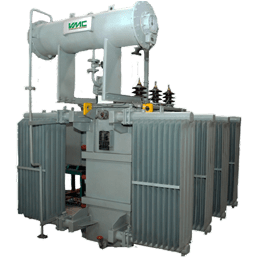Table of Contents
ToggleIntroduction
Solar Power is generated by photovoltaic panels or concentrated solar power plants. In case of photovoltaic power generation, electric power is generated by converting solar radiation into direct current (DC) electricity by using semiconductors that exhibit photo voltaic effect.
Photovoltaic power generation employs solar panels comprising a string of photovoltaic modules containing a photovoltaic material, often made of silicon. The photovoltaic modules can typically generate a combined dc voltage of up to 1100 V (dc). The module manufacturers are working on 1500 V (dc) photovoltaic modules.
Normally, the dc power rating of the photovoltaic array connected to an inverter is substantially greater than the power rating of the inverter; this is referred to as dc/ac power ratio. The generated dc voltage is then converted to a three-phase ac voltage using either a three-phase inverter or multiple single-phase micro-inverters.
The inverter output ac voltage at 50 Hz or 60 Hz is dictated by the level of the photovoltaic module dc voltage. The inverter is subsequently connected to a distributed PV system inverter transformer. The inverter transformer is a step-up transformer that changes the input voltage to MV and accommodates the voltage polarity reversal and pulsation taking place in the power inverting process.
Network of Transformer use in Solar power plant

Types of Transformer use in Solar Pover plant
Inverter Transformer – to step up PV inverter AC output voltage to MV voltage (11-33 kV)
Auxiliary Transformer – to meet station load and power supply to inverter (grid voltage or inverter output voltage /0.415 kV)
Earthing Transformer – to provide a virtual neutral to the MV grid (33kV)
Collector Transformer- to collect the output of several inverter transformers and step it up to feed to the distribution lines or HV power grid (33 /66-400 kV)
Voltage Regulator- 33kV booster transformer with OLTC
Inverter Transformer
Inverter transformers are used in solar parks for stepping up the AC voltage output (208-690 V) from solar inverters (rating 500-2000 kVA) to MV voltages (11-33 kV) to feed the collector transformer. Transformer ratings up to 5 MVA are with double LVs and up to 16 MVA are with quadruple LV circuits. LV side of transformer will see voltage polarity reversals, pulsation and heavy harmonic voltage/current content from the solar inverters.
Usually, a grounded electrostatic shield is provided between LV and HV windings to filter out these harmonics reaching HV side. Mineral oil or ester is used as insulating liquid in these transformers.
Collector Transformer
Power from individual inverter transformers at 11-33 kV is collected by the Collector Transformer and stepped up to HV voltage of 66-400 kV. Maximum MVA of collector transformer is limited by the rating of MV breaker used on LV side. Maximum breaking capacity of 36 kV breaker is limited at about 160 MVA of transformer capacity with normal percentage impedances.
collector transformers are used up to a rating of 315 MVA 33-33/ 400 kV with LV side split in to two circuits to limit fault level within the MV breaker capacity. These transformers are with OLTC on HV neutral end for HV variation by +-10 %.
Auxiliary Transformer
Auxiliary Transformer is a low kVA 3 phase transformer to supply power to inverter and provide station load. It can be a standalone unit or integrated with the inverter enclosure. Primary may be connected to power grid or to the pulsed output voltage of the inverter.
Earthing Transformer
Earthing (grounding) transformer (zig- zag connected) will be required at the ungrounded MV circuit to get a grounding neutral. This is a single winding zig-zag connected, short time (10 second) rated transformer, with the neutral solidly grounded or grounded through a resistor. A star/delta connected transformer also can meet this purpose.
Voltage Regulator
A booster (voltage regulator) with On-Load Tap-Changer can be provided on LV side or HV side of inverter transformer to take care of the voltage fluctuation of grid while feeding power to grid. These are small three phase auto-transformers with buck-boost OLTC for regulating the output voltage by +-10% in 16 or 32 steps. When used on LV side, ratings up to 250 kVA and for MV side transformers up to 8 MVA are commonly used.


Pingback: Power quality issues of rooftop solar PV plant on LV distribution
Pingback: Polyphase Transformers and their connection - Electricalsphere
Pingback: Solid State Transformer (SST)
hi
Good day! Would you mind if I share your blog with my zynga group?There’s a lot of folks that I think would really enjoy your content. Please let me know. Cheers
You will share my website to your friends group.